In the Southeastern corner of Utah, just off Highway 191, tucked tightly in the middle of San Juan County, there is a small community of between 250 and 300 Ute Indians known as the White Mesa Ute Mountain Ute Tribe.
The area is quiet, there isn’t much around. The closest towns are Blanding, six miles north, and Bluff down south 14 miles. Drive an hour and a half north and you’ll be in Arches National Park, or a few minutes further and you’ll be in Moab. Other than hauling trucks, pickups, clunkers and the occasional suitcase-stuffed sedan or minivan, there is little movement through White Mesa.

Howard recognizes the land, which is defined primarily by sagebrush and intense heat. He has lived here his entire life, despite having his family move away to Colorado for school and work opportunities. He remembers playing hide-and-seek and other games in the arid, sagebrush saturated canyons that occupy the Four Corners region.
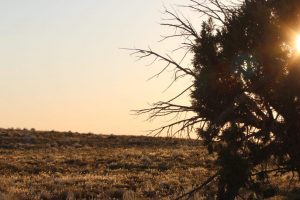
Howard stands in his backyard, which hosts a heterogeneity of tree species: Aspen, apple, peach, pear, cherry and apricot — although this year’s peach, cherry and apricots crops froze during an April storm.
“I used to play in these canyons when I was a young boy. We played over on that mesa. Back then we didn’t have computers, so we played out here in the open area,” said Howard, who asked to be identified by a pseudonym to protect his identity. “We used to play soccer and kickball, but you just never see kids doing that anymore.”
Howard also remembers the uranium mill.
Just five miles up the road from the White Mesa Ute Tribe reservation sits the White Mesa mill, the last of the uranium-processing and manufacturing mills in the United States. It was there in the 1980s when Howard was growing up, and it is still there today.
The mill is owned by Energy Fuels Inc., a Canadian company with an American affiliate based in Lakewood, CO. Construction of the mill began in 1979 and the mill began processing uranium in the early 1980s.

After about a decade of operation, the mill began acting as a waste disposal site for other radioactive sites and mines throughout the Grand Canyon region and other areas throughout the country, in addition to being a conventional uranium mill.
How does Howard feel about the uranium mill? “I just don’t like it being there, that’s all,” he said. “Because it’s going to give people health problems. Whoever decided to put it there thinks it’s fine and I disagree with that.”
Uranium is a dense, radioactive metal that is mainly used for the production of nuclear energy and weapons, as well as warfare-grade weaponry like armor piercing bullets.
At White Mesa, uranium ore is shipped to the mill where it undergoes a three-stage process, eventually being packed into yellow cake patties. What doesn’t make it into the final product, including metals, toxic chemicals and acids, is dumped into large “tailings” impoundments that store the mill’s, and the country’s, radioactive waste.

As a boy, Howard remembers traveling two hours east to Mesa Verde, CO. On the side of the highway, there’s a run-down convenience store. In the ‘80s, Howard remembers being able to “smell uranium around that store inside and out. Today, the store is closed as a toxic, radioactive site. “There’s a big sign there and they say closed that store down,” Howard said. “And it’s funny, because why didn’t they close it down way back?”
The smell of uranium, which is like “a strong metal odor, like copper,” is something Howard will never forget. “You could smell it,” he said. “You were actually breathing it and inhaling it.”
Howard has smelled the same odor in his own backyard coming from uphill at the mill site, which is only about six miles from his property. “Years and years ago we had a blue haze in this area. You could just smell it, it was awful.” This happened, Howard said, in the ‘80s and again around 2007.
Howard is worried that the mill will contaminate the groundwater and eventually cause health problems in the White Mesa community. What health problems specifically? “I couldn’t really say, because I just don’t know,” Howard said. “But I know it’s going to give the community health problems later on down the road. Not just the community but anything that’s living, like plants and animals. It could affect them.”
Howard believes the mill is “destroying plants, wildlife, humans” and “livestock, whether it be cows or horses in the area close by.” He is worried about the birds that eat and peck at his apples that haven’t been harvested, or the squirrel that has a habit of knocking down his pears. He thinks about the mountain lion and her cubs whose growls can be heard from a nearby canyon. He fears for the domestic dogs and cats that frequent the area (nearly every house in White Mesa has a dog chained or fenced in the yard).
“It doesn’t make me feel good,” Howard said, when asked about living next to the mill. “I just wish the government would have put it somewhere else. Elsewhere where it doesn’t affect the communities, in some secluded area out of the way of human life.”
Water Worries
When Iesha Atene was a little, she remembers playing at her grandparent’s house and noticing hard water and rust stains in the sinks and toilets.
“At first I thought they were just dirty people,” Atene said. “It was funny. We just crack up about that.”

Now that she is older, Atene understands that the water stains were out of her grandparents’ control. Currently, at her mother’s house, a mid-sized white home that lies on the town’s eastern edge, the toilet bowls, bathtub liners and sinks are stained in color gradients ranging from yellow-orange to a dark, rusty mahogany.
The kitchen sink is lined with stainless steel, the tub liner consists of plastic and the sinks and toilets are porcelain, but each is covered in dark red and yellow stains all the same.
They have tried to scrub the stains away, said Darlene Morris, who is Atene’s mother. They’ve used every cleaner they can think of: Clorox, Pine-Sol, SOS soap pads, Comet Cleaner. But the stains are unmoving and eternal.
“It always has that yellow color,” Atene said. “It won’t go away, no matter what we do.”

Atene’s father told her from a young age that she shouldn’t drink the tap water. The last time Atene, who is currently 24, drank water from the tap, she was eight or nie years old.
The water in White Mesa is “nasty,” Atene said. “It stinks really bad in the mornings. We have to run it for a while before we even try to use it.” “The water smells like sewer when it first comes out,” Morris agrees. “You have to run it for a long time.”
The Morris household is crowded. Although Atene is only visiting, Morris’s three other daughters live at home, all three of whom have kids of their own. “We have little kids,” Morris said. “I have my granddaughters and my grandson here all the time.”
To bathe her 4-month-old, Morris said her one of her daughter boils the water to purify it. “She puts in a lot of work. She boils the water and then gives her baby a bath.”
“Everybody’s Going to Die From Something”
Seventy miles. An hour and a half. That is how long it takes some White Mesa residents to get drinking water.
That is because, in White Mesa, drinking water from the kitchen tap, or any other groundwater source, is practically unheard of. The town’s occupants complain the drinking water has a metallic taste to it, like copper or aluminum. It carries a strong odor, as well. Sometimes it smells like metal, other times, usually in the mornings when the shower or sink is running, like sulfur.
In July, The Daily Utah Chronicle spoke with 15 White Mesa residents who said they do not drink their tap water. A 16th resident said he sometimes drinks it, but not because he doesn’t think it is contaminated. Rather, he chooses to drink it because “everybody’s going to die from something.”
Why don’t you drink the tap water? Because “it smells,” said resident Toni Pelt, “and it’s been like that all my life. My parents always got water from town. It smells like a sewer. It’s kind of awful sometimes when it’s really bad.”
Jonita Dale recalls making a pitcher of Gatorade earlier this year. While she normally doesn’t drink water from the sink, she made an exception. Soon after, Dale “started feeling sick from it. Like when you burp and you don’t feel good. I wanted to throw up. And that’s why I don’t drink it.”

After that incident, Dale won’t drink the water. And she won’t let her two young children, either. “My main concern is for my kids,” she admits. “If there really is something in it, then I wouldn’t want them drinking it.”
The mill contests that there has not been any groundwater contamination or other problems that would impact the drinking water in White Mesa. Curtis Moore, Energy Fuel Inc.’s vice president of marketing and corporate development, said the mill regularly monitors for contamination and meets all regulatory guidelines laid out by the Utah Division of Waste Management and Radiation Control, a subdivision of the Utah Department of Environmental Quality.
According to Moore, “the monitors are not showing any groundwater issues” or indicate that the mill is negatively impacting the White Mesa water supply. “I don’t think there is any evidence whatsoever to say our mill is impacting their tap water.”
Despite the claims of Energy Fuels that everything is well in order at the mill, there are groups that remain unconvinced.
Colin Larrick has worked as the water quality program manager for the Ute Mountain Ute Tribe for over 10 years. His job is to administer the Clean Water Act, a 1972 amendment of the Federal Water Pollution Control Act of 1948.
The Clean Water Act established a basic structure for regulating groundwater pollution, gave the Environmental Protection Agency authority to implement wastewater standards and funded the construction of sewage treatment plants.
“My job is pretty much to protect the Tribe’s water resources: surface water and groundwater,” Larrick said. “That involves collecting and evaluating data to make sure water quality is good enough to be used for what it needs to be used for,” including livestock and agricultural use, properly serving aquatic life and ecological functions, and as drinking water.
There are two water aquifers lying beneath the White Mesa region: the shallow Perched Aquifer, which contains the Burro Canyon formation and is used for domestic purposes, and the deeper Navajo Aquifer.
In the short film Half Life: America’s Last Uranium Mill, produced and published by Grand Canyon Trust, a nonprofit environmental advocacy group, Larrick describes his problem with the mill’s location.
“Our concern is that liquids and radioactive toxic wastes from these tailing cell impoundments will migrate down into the Burrow Canyon formation, just like rain water or snow melt does, and find its way into these springs. That would be the first route of exposure to the environment; the people, wildlife and plants.”

Larrick is also concerned about contamination of the Navajo Aquifer, an important source of drinking water for a number of towns in Southeast Utah and Northern Arizona, including Bluff, Kayenta and Tuba City. The Navajo Aquifer discharges, in addition, into the San Juan River, something else that gives Larrick unrest.
“From the replacement work they did, it is obvious that the liner is in very poor condition,” Larrick said. “There were many cracks, holes, sections of missing liner. Any liquid migration through the liners would introduce those fluids into this aquifer.”
When asked about the repairs, Moore said he is unaware of liner damage and “doesn’t know about that personally.” “There is no evidence that there are problems. It sounds like that is kind of an unsupported contention that they’re making.”
Larrick said there has yet to be any serious contamination of either aquifer in the White Mesa region. His worry, however, is that by the time such a spill is discovered it will be too late and municipal drinking water will be affected. “We hope never to see contamination from the mill in these springs and seeps,” said Larrick.
Radon Exceedances
In 2014, the Grand Canyon Trust filed a civil suit against Energy Fuels for violating the Clean Air Act of 1970, in which the EPA established a list of emission standards for “hazardous air pollutants,” including radon-222, a byproduct of radium which, in 1986, was concluded to pose “a significant enough health risk (particularly of lung cancer) to warrant establishing emission standards for those releases under Section 112 of the Act.”
These regulations are further codified in the National Emission Standards for Radon Emissions From Operating Mill Tailings, a subpart of the U.S. Code of Federal Regulations (CFR) Title 40: Protection of Environment.
Title 40 CFR 61.254b outlines conventional impoundments as not to “exceed 20 pCi/(m2-sec) (1.9 pCi/(ft 2-sec)),” or 20 picocuries per square meter per second, “of radon-222.”
“The mill is required to monitor radon emissions off of the impoundments and evaporation ponds” and must conduct regular monitoring, said Amber Reimondo, energy program director for Grand Canyon Trust. “A few years ago, the mill detected several instances of radon emissions being in excess of what the EPA has determined to be safe from a public health standpoint.”
Quarterly and annual evaluation reports corroborate claims that the White Mesa mill exceeded these limits repeatedly in 2012 and 2013, long after the mill was purchased by Energy Fuels Inc. from Denison Mines in 2007.
In June 2012, Energy Fuels performed radon flux measurements on tailings impoundments 2 and 3, which were both built in the early ‘80s, using NESHAP, a radon flux measurement standard. The results showed that tailings Cell 2’s radon flux exceed regulatory limits.
According to the lawsuit, radon flux measurements are taken from three areas of each tailings pile: water-saturated beaches, dry-top surfaces areas and the sides of the impoundments. Radon measurements are taken in every region “except for those areas covered with water.” Cell 2’s average as a whole, taken from June 11 to June 15, was 23.1, which is 3.1 picocuries over federal limits.

In light of the troubling findings, Energy Fuels scheduled additional tests. In September, when the next radon flux samples were taken, the results came in at 26.6, even higher than June’s results. Still, radon emissions rose to 27.7 in October. A final measurement for 2012 was taken in November; the results came back as 26.1.
On average, the mill exceeded radon-222 emissions standards by 5.9 picocuries, about 30 percent over emission limits outlined by federal law.
The following year, in July, Energy Fuels Resources Inc. emailed Bryce C. Bird, the director of the Air Quality Division of Utah Department of Environmental Quality, announcing that, in light of recent exceedances, the mill would begin performing monthly evaluation of tailings Cell 2.
“As required in 40 CFR 61.254b, EFRI [Energy Fuels Resources Inc.] is to perform monthly radon flux monitoring beginning the month immediately following submitting of the report for the year in noncompliance [2012],” signed Jo Ann Tischler, Energy Fuel Inc.’s compliance and licensing manager.
In order to deduce factors causing excess emissions, the mill conducted evaluations including excavation of Cell 2 sands to “collect additional information needed to ascertain factors affecting radon flow path and flux,” an “evaluation of radon trends relative to slimes drain dewaterings” and an estimate of the “thickness of temporary cover that would be required to achieve compliance with the radon flux standard” during the dewatering process.
Once again, reports showed that radon emissions were in exceedance of federal guidelines.
The “Tailings Cell 2 Monthly Compliance Report for September 2013” states that Cell 2’s radon exceedances is “most likely the unavoidable result of Cell 2 dewatering activities mandated by the Mill’s State of Utah GWDP [Ground Water Discharge Permit]. This is due to the fact that the saturated tailings sands attenuate radon flux more than dry tailings sands, and the thickness of saturated tailings sands decrease as dewatering progresses,” the report reads.
To address and fix these regulatory exceedances, the mill proposed building a “temporary cover required to achieve the radon flux standard during the dewatering process” for Cell 2. Finally, in September 2013, the mill was below federal guidelines at 17.0 picocuries per square meter per second. The annual average of Cell 2’s emissions for 2013 came out to 120.4 pCi/(m2-sec), exceeding the legal limit.
“Not Violations”
Energy Fuels is adamant in contending that the mill has never violated regulatory guidelines outlined by state and federal agencies.
“The White Mesa Mill has been responsibly producing natural uranium product for almost 40 years,” writes Mark Chalmers, chief operating officer of Energy Fuels Resources, in an op-ed published by the Salt Lake Tribune.
“The standards that apply to the facility, including standards for air emissions and radioactivity, are extraordinarily stringent, and the mill operates in compliance with every applicable law, rule and regulation, all of which are strictly enforced by those [regulatory] agencies,” Chalmers said. “We can say with confidence that the Mill is safe to the public, our employees and the environment.”
What about radon emission exceedances in 2012 and 2013? “That’s not a violation, Moore explained. “The way it works, under the license, is that you have this very detailed monitoring system in place, and if one of your monitors shows an exceedance, you address it. And we’ve always addressed it.”
And consecutive months of excess of radon emissions does not constitute a violation? No, Moore said. “Violations are a much more strict manner. It’s a punishment, I guess you could say. So we’ve never had those kind of issues down at the mill. We’ve had exceedances occasionally,” Moore confesses, “but it’s been addressed immediately.”
“That’s the way all environmental compliance works, whether it’s uranium mining or anything else,” Moore adds. “When you have an exceedance, it’s not like all of a sudden they just drop the hammer on you.”
The Grand Canyon Trust is well aware that no hammer has been dropped. “Neither EPA nor the State of Utah took enforcement action against Energy Fuels for violating Subpart W,” the lawsuit reads. “So, on January 29, 2014, the Trust notified Energy Fuels, EPA, and the State that the Trust intended to sue the company under the Clean Air Act’s ‘citizen-suit’ provision.”
The Trust’s complaint was filed on April 2, 2014, and alleged that the mill had violated Subpart W by “failing to keep the 2012 and 2013 average annual radon-222 emissions from Cell 2 below” the federal limits.
These exceedances, the suit argues, pose a significant health risk to the community, citing community residents who do not drink their tap water. It argues, furthermore, that the mill decreases the White Mesa region’s aesthetic and recreational value and negatively impacts the overall life of residents.
Hazy Highway
Howard hasn’t seen the blue haze rising from the mill for some years now. Other residents, however, have more timely accounts.
A few months ago, White Mesa resident Trevor, who is identified here by a pseudonym, recalls driving home from grocery shopping with his girlfriend. He was heading south from Blanding towards White Mesa.
As he was passing the mill, Trevor had to pull over to the side of the highway and stop. There was a dirt devil heading from the direction of the mill.
Inferring from the smell, as well as the blue-grey tint of the storm, Trevor decided against driving through it and let it pass first. He said other cars pulled over as well.
“It was pretty dark,” he said of the dust cloud. “We had to stop. We didn’t want to drive through it. It blew from the mill site. That happened maybe a couple months ago.”
Other residents have similar stories. During her security patrol of the community streets and neighborhoods, Victoria Keith said she can smell “metal” coming from the mill, especially in the evening time.
Lifetime resident Yolanda Badback said she has been smelling the mill since she was a young child. The odor is still there, Badback said, and it hasn’t changed a bit.
Spills on 191
To be certain, the two biggest health concerns of community members, environmental groups and researchers are the contamination of groundwater and excessive radon emissions into the air. Another concern, however, is the transportation of radioactive material to the mill from other uranium mills, mines and operating sites.
Leona Morgan, an organizer for Haul No!, a volunteer group working to “raise awareness about the transport of uranium ores from canyon mines to the White Mesa mill,” said transport of radioactive waste poses threats to Native American tribes and communities.

“The majority of the transport route goes through Navajo nations that have a law against transporting radioactive material,” Morgan said, “But is unable to enforce it because the transit is on state and federal highways.”
Haul No!, Morgan said, is concerned that dangerous, cancer-causing waste is being transported throughout main roads in southeastern Utah. “There are a lot of issues with [spill] cleanup,” she said.
In June, Haul No! began a month-long tour throughout the Four Corners region, stopping in towns where residents have been negatively affected by uranium mining, including Tuba City, Flagstaff and Cameron in Arizona, as well as Monument Valley in Oljato, UT.
The San Juan Record reports that on two separate occasions, trucks driving from the Smith-Highland Ranch uranium production site in Wyoming on “August 19, 2015, and again on March 29, 2016 were found to be leaking radioactive material. The trucks were carrying barium sulfate sludge from the mine to White Mesa.”
An investigation by the Nuclear Regulatory Commission (NRC) concluded that the company that owns the mill, Cameco Resources, a uranium producer that accounts for “about 17 percent of global production from its mines in Canada, the U.S. and Kazakhstan,” had improperly loaded and failed to identify the contents of the truck.
In the March 2016 incident, a truck driver braked hard to avoid a deer, causing some of the haul’s 12 cubic yards of white paste to spill onto the highway. The NRC investigation found that the material that leaked from the truck was radioactive, and that an estimated five gallons had spilled on the route from the Wyoming facility to White Mesa.
In a retributive measure, Cameco was forced to halt shipments from the Smith-Highland Ranch, However, the NRC did not find it necessary to fine the company $35,000 for repeated highway spills.
“To encourage prompt identification and comprehensive correction of violations, I have been authorized not to propose a civil penalty in this case,” said Scott Morris, the NRC’s deputy regional administrator. However, Morris added, a “civil penalty” could result from severe violations in the future.
“Not Something You’d Want Next Door”
Sarah Fields, director and founder of Uranium Watch, a nonprofit that “mostly pays attention to uranium mining issues in Utah,” as well as the other Four Corner states, is uncomfortable with toxic waste from nuclear production facilities throughout the country being transported on crowded roads. There is “some very nasty stuff just going along the highway,” Fields said.
Fields is “very concerned” about the White Mesa mill processing materials other than uranium ore, materials of which the “waste is more highly radioactive.” She said the mill was not built to process and store highly radioactive substances, like thorium-232. “The tailings impoundments were not designed for the processing of these types of materials, and the EPA regulations were not propagated anticipating the processing of these types of materials, and then disposing of the resulting waste.”
She too can’t help but feel that the mill poses a threat to the White Mesa Reservation. “It’s not really something you’d want next door to where you live, or I’m sure most of the owners of White Mesa mill would want next to their home,” Fields said.
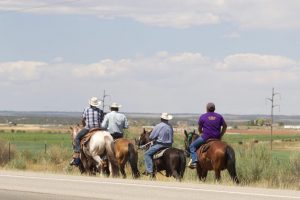
“They are living right next to the mill and, when it operates, they can smell the material,” she said. “The school buses drive back and forth between White Mesa and Blanding to take the kids to school. So they are concerned.”
What are Fields’s biggest issues with the White Mesa mill? “There’s a lot of them,” she said. “I don’t think the mill is regulated in the way it should be regulated.”
Fields feels strongly that environmental regulatory agencies, like the EPA, Bureau of Land Management and agencies that oversee air and water quality, fail to enforce regulations in a safe and productive way. “What I have found is that you have regulatory agencies and they don’t always follow either the statutes or the regulations,” Fields said.
Fields worries that White Mesa residents are falling victim to passive and negligent government agencies.
“You’re just totally dependent on the regulatory agency saying, ‘Okay, everything’s okay,’” Fields said. “And yet, they [White Mesa residents] feel like everything isn’t okay. And if the groundwater were ever really contaminated, they are concerned about crops and pathways from the upper aquifer that provides water to the area, and also down to Bluff.”
Inside White Mesa
Trevor easily recognizes the aroma from the dust devil that floated from the mill. He worked there as a loading operator when he was 21 years old.
Like other White Mesa residents, Trevor doesn’t drink the tap water. “But when I worked there, the water at the mill smelled the same as it does here [in town],” Trevor said. “And they use that for service water, and that’s what they use to spray down chemicals.”
As an employee, Trevor said he tried to sample and test water inside the mill but was told he “couldn’t bring anything in.”
Trevor claims that during his roughly six months at the mill, he observed “unsafe stuff” taking place at the mill.
“Like how they handle their chemicals,” he said. “They just bury it.”
Trevor doesn’t believe that the mill is taking proper safety precautions as they handle these hazardous materials.
“It Splashed All Over Me”
Part of Trevor’s duties included loading uranium ore into the grinder as an initial step of the yellow cake manufacturing process. As a protective measure against radioactive materials, loading operators wear “full rain suit gear” and a respirator.
“It got pretty hot in there,” Trevor said. “Inside those containers, when they’re all suited up and everything.”
He remembers seeing or hearing about employees losing consciousness from the heat. “I know a few people who passed out from being too hot. It gets pretty hot over there. Especially if you’re covered in all that gear.”
“I know it’s the job description,” said Trevor, “But they just tell them to keep doing it until everything is clean.”
One morning, there was an incident at the mill that led to Trevor’s departure. He was helping another employee lift a container of dangerous chemicals used in the uranium manufacturing process. “He dropped a big huge drum and it splashed all over me.”
“That guy was kind of drunk, though,” Trevor claims. “They don’t really watch that.”
Energy Fuels disputes that any malpractice or misaction goes on at the mill and said that safety and accident prevention are top priorities of the company.
Still, Trevor does not reflect on his experience with the mill kindly and will always wonder if the health effects from his accident will ever surface. “I was wearing my respirator,” he said, “but I don’t know.”
Another White Mesa resident had similar experiences working in the mill. Robert worked as a CCD technician about a decade ago. He liked his work because he was good at it, and he was on one of the most proficient operating crews the mill had. While working there, Robert taught his crew how to operate heavy equipment, something he learned working for various temp agencies in Colorado.
“But I’ve seen a lot of bad things, too,” said Robert, who did not his real name used in this story. Like what? “Like how they burned the uranium.”
Robert remembers an incident where a batch of uranium was botched due to excessive acid concentrations in the mixture. So, they dumped in a waste pond outside the mill. “They burned the uranium and had to flush it,” Robert said. They had too much acid in the product and had to flush it out into the waste pond.”
According to Robert, his superiors told him and other employees to not tell anybody about the incident.
Another time, Robert was hanging from a crane to clean one of the radioactive containers “because that [radioactive] material was squirting out the side of the tank, so I had to go up there and tighten up all the screws and bolts.”
“A lot of leaks, a lot of spills,” Robert recalls from his time at the mill. He said, one time, a pipe was clogged and they had to “pump the whole thing out.”
The mill’s equipment is “really old,” Robert said. “The pumps, the area where they make the yellow cake, the last part of the process of making the uranium yellow cake, everything is out of date.”
How do you know the equipment is out of date? “I mean, you can tell,” said Robert. “I asked. I said, ‘how old is this?’ and they [superiors] said, ‘shit is old.’” Robert asked why the equipment wasn’t replaced or updated. They told him they didn’t know.
“You Have to Be a White Man to Get Anywhere Up There”
Robert eventually lost interest in the mill because he felt like he wasn’t being treated, or paid, right. He said he was supposed to receive a raise at his six-month mark, as well as a safety bonus raise for not having any on-the-job accidents. But the raise never came and the safety bonus was no different. Soon after, Robert decided the mill wasn’t for him.
“They don’t pay you right, you know,” Robert said. “You have to be a white man to get anywhere up there.”
Folks from the Ute mountain tribe, as well as from other Native American communities in the Four Corners region, such as the Piute and Navajo tribes, are treated unfairly by the mill, Trevor said, as well as by other construction, labor and manufacturing agencies.
Although he has never worked at the mill, Howard holds a similar sentiment. As of July, he said he is unaware of anyone from White Mesa being employed by the mill. “Way back when the mill first opened, they promised the people here that they would have jobs for them,” Howard said. “Just a few people out of the community got hired for those jobs, and when they were working there, it wasn’t too long before they were laid off. They tried to go back, but there was no job.”
If true for no one else, it was certainly true for Robert. Recently he talked to someone he knew at the mill asking for his job back, but was told that they didn’t need him.
Moore said the majority of the mill’s employees come from local tribes and communities and that Energy Fuels makes a conscious effort to hire Native American workers.
“Most of our workforce comes from the local communities, whether it’s in Blanding, the White Mesa community or any other communities in the region,” he said. “I don’t have the exact number, but we do employ a lot of Native Americans from the region, for sure.”
Robert follows the consistent trend of community residents who say their tap water smells and tastes too bad to drink, and he thinks the mill is responsible. “I think that [the mill] is why our groundwater is bad. It’s probably seeping down into there, somehow, because the ponds at the mill are loaded with contaminated water,” he said, and you can see it.
“The deer all go out there and eat,” Robert said. “I’ve seen a lot of deer out there, eating. I don’t know what’s going to happen to the deer. Maybe they’ll grow another head or something.”
The statement is a joke, but the worry in his voice is unwavering.
Painful Past
The White Mesa mill, and the surrounding region, has a toxic legacy that it is still trying to move past. Throughout the 1940s and up to the ‘60s, uranium mining was a booming industry that promised the rural communities in which the mines occupied prosperity, wealth and wellbeing.
It gave them none of these things.
“Mines were not very well ventilated, so they [miners] would inhale uranium dust and that would get into their lungs and cause cancer and other health problems,” Moore said. “That’s definitely something we have to deal with as an industry.”
Thirty minutes north of White Mesa is the city of Monticello, a community of about 2,000 residents.
In October 2012, the Utah Department of Health prepared a reported titled “Cancer Incidence Follow-Up Investigation for Monticello, San Juan County, Utah Covering the Period from 1973 to 2009.”
“From 1943 to 1960, an active uranium and vanadium processing mill was located immediately adjacent to Monticello. Mill waste was deposited at the Monticello Mill Tails Site (MMTS),” the report’s executive summary reads. “Those tailings were contaminated with heavy metal and radioactive materials.”
These contaminants migrated into the Monticello community and “exposure to hazardous materials occurred before remediation. It is known that residents were exposed to both heavy metal and radioactive contamination from the MMTS.”
“This study found that the rate of lung and bronchial cancer was elevated” for the time periods that were looked at, including 1995-1999, 2000-2004 and 2005-2009.
Despite the study’s findings, and a massive concession that “lung cancer has been associated with exposure to radioactive heavy metals such as uranium,” the study was “unable to conclusively link the observed lung cancers to contaminant exposure from the MMTS.”
Reimondo of Grand Canyon Trust said the studies lukewarm findings are the most conclusive evidence you can get of uranium’s health effects. That is “just the way these things go,” Reimondo said. “Then conclusion was, yes, there were elevated rates of cancer, and it was probably from the mill. But that’s as specific as you can get, really.”
Environmental Racism
It is no coincidence it was mainly Native Americans who had to deal with the damaging effects of Monticello’s radioactive waste.
Dr. Danielle Endres, chair of the communication department at the University of Utah, has spent her academic career studying “how North American indigenous people have been disproportionately harmed by the nuclear production process from uranium mining and nuclear testing.”
The term for this is environmental racism, a subset of environmental justice, a system in which “people of color, who are already marginalized and underrepresented through racism, are disproportionately affected by the harmful effects of environmental degradation.”
Native Americans have historically and continue today to be disproportionately impacted by uranium mining and nuclear production, Endres said, giving the example of the Diné reservation land, a Navajo reservation.
“Poor regulations, safety measures and compensation all contributed to a poor situation where Diné people and their land were harmed by uranium mining on their land and were not adequately compensated for those harms.”
Because of popular perceptions of deserts as wastelands, arid areas, often near Native American reservations and communities, are seen as the logical place to store nuclear waste. “There is a perception among many people that deserts are wastelands because of their aridity, lack of charismatic flora and fauna, and lower population sizes,” Endres said.
As a result, small, predominately Native American communities are left to deal with waste too toxic to store anywhere else in the country.
Recycling Business
On July 24, 2015, the Sequoyah Fuels Corporation, an Oklahoma-based company that owned and operated a uranium processing plant in the ‘80s, wrote a letter to the Oklahoma Attorney General’s Office stating that the company could not find a place to ship and dump the plant’s extremely toxic waste.
“There is no viable option for offsite disposal of the Materials,” wrote John Mitchell, president of Sequoyah Fuels.
The reason? No sites would take it. Sequoyah Fuels’s waste was too hot, too toxic, for every one of these proposed sites.
License Renewal
White Mesa was one of the sites investigated for a possible dump site for the Sequoyah Fuels waste.
“We investigated use of the White Mesa site for disposal of the Materials as AFS [Alternate Feed Stock],” the letter reads. However, the “White Mesa facility currently is not licensed to accept any of the Materials.”
White Mesa’s radioactive material license expired in 2007 and, since then, Energy Fuels has perpetually been in the process of renewal.
“The White Mesa option is, at best, uncertain and likely years away,” reads the letter. For these reasons, “White Mesa also is not a viable option.”
Then, a renewed license is the only thing standing between White Mesa and waste too toxic to store anywhere else.
Although the mill’s radioactive material license has been expired for more than a decade, the mill has continued to operate, manufacture uranium and import toxic waste.
Is the mill operating without a license? No, it isn’t, Moore said. The mill is “in what’s called timely renewal. The mill operating unlicensed is “one thousand percent false.”
What would it look like if the mill was operating unlicensed? “I think people would go to jail,” Moore responded. “I’m serious. There’s no way any governmental agency on Earth would let us operate without a license. It’s actually kind of a ridiculous statement to make. It’s just not allowed to happen.”
As for the license renewal, Moore said they are “in the final stages.” Utah regulatory agencies take a “very calculated sort of review to make sure they get it right with the license renewal,” which is why, Moore said, the renewal has taken more than 10 years.


Future of White Mesa Mill
At the moment, it is unclear what the future holds for the White Mesa mill. In addition to the time consuming and painstaking license renewal process, the mill is fighting against the plummeting value of uranium.
Between 2010 and 2014, White Mesa produced, on average, 1.06 million pounds of uranium. In 2015, that number staggered down the 0.3 million pounds. “We have to be responsive to the market,” Moore said.
At full capacity, the mill employs 150 workers. Currently, that number is somewhere between 40 and 60 employees. “We’ve had to lay off some folks,” Moore said, regretfully.
In May, the Utah Department of Environmental Quality offices began holding public comment meetings for community members to voice their concerns or opposition to the mill. The White Mesa Concerned Community Group, spearheaded by Yolanda Badback, as been a prominent voice at these meetings.

Energy Fuels is dismissive of community concerns and said they are “very much overblown.” Moore said White Mesa tribal members are being riled up by partisan environmental groups.
“There are some groups out there, like the Sierra Clubs of the world, that are basically anti-nuclear, and so they look to oppose nuclear energy from the uranium mining all the way to final nuclear waste disposal,” Moore said. “And this is just part of their overall tactics.”
“I’m sorry to say, but I think they [environmental groups] unduly influence some of the local community members,” he continues. “I think they’re afraid for no reason.”
But for White Mesa residents, the reasons are real.
Everyone involved, from White Mesa Ute tribal members to the owners and operators of the mill itself, are attempting to move forward from the dangerous, cancerous legacy that uranium manufacturing has left.
“We do take that [environmental concerns] seriously,” Moore said. “We do have our detractors, and we do have this legacy that we are always trying to get past. That’s why we take it seriously and we work very hard at doing it responsibly.”
The public comment period for the White Mesa uranium mill’s license renewal is open until July 31, 2017. Comments, concerns and thoughts can be emailed to [email protected] or mailed to Scott Anderson, Director, Division of Waste Management and Radiation Control, P.O. Box 144880, Salt Lake City, UT 84114-4850.
Note: Connor Richards is currently the assistant editor of the Chronicle’s opinion desk. He worked on this assignment in the capacity of investigative reporter, and his position as assistant opinion editor did not influence this story. This is an investigative news report, not an opinion column.







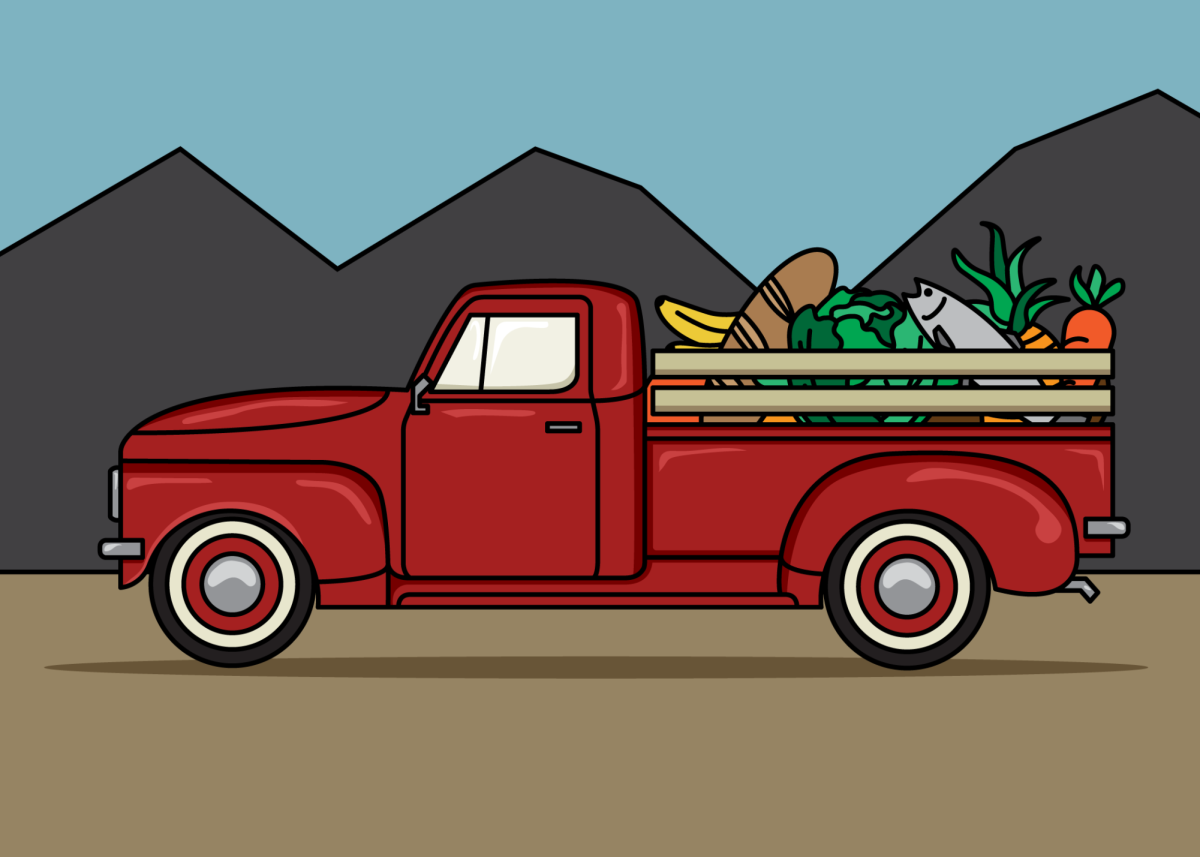
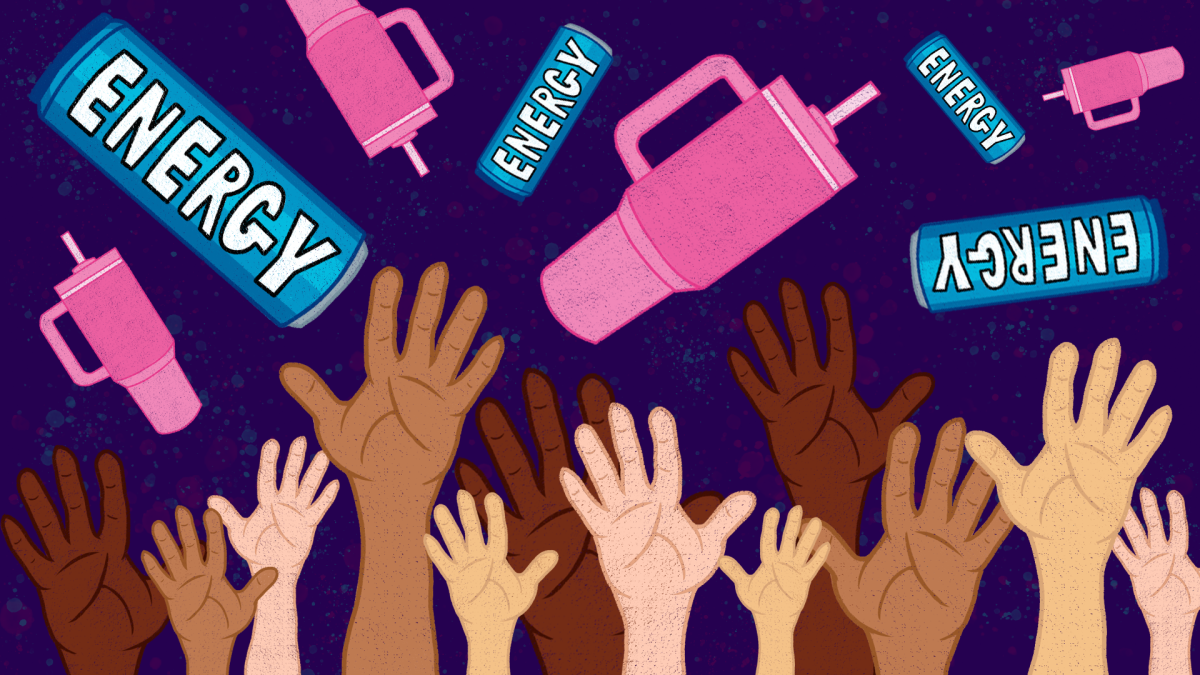






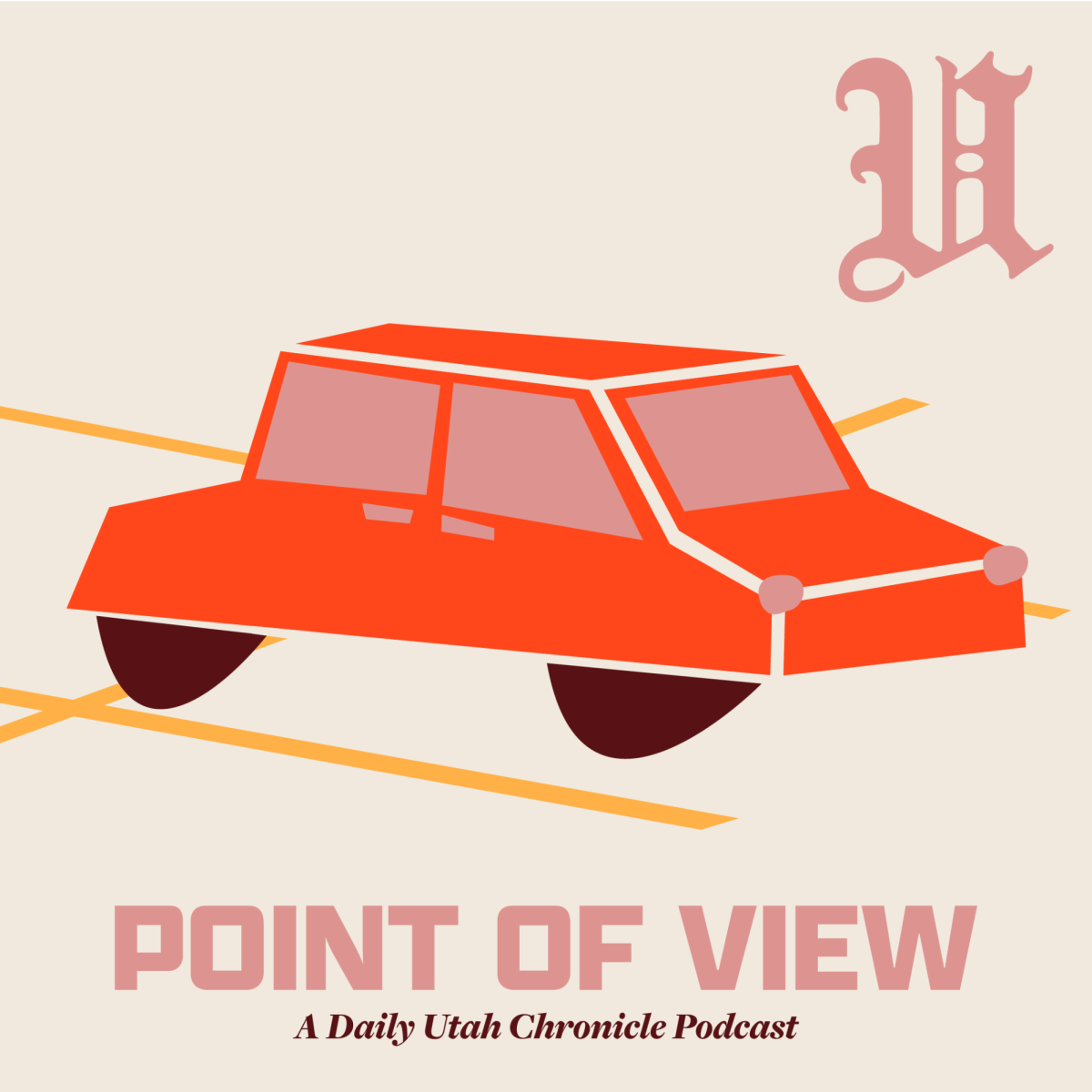






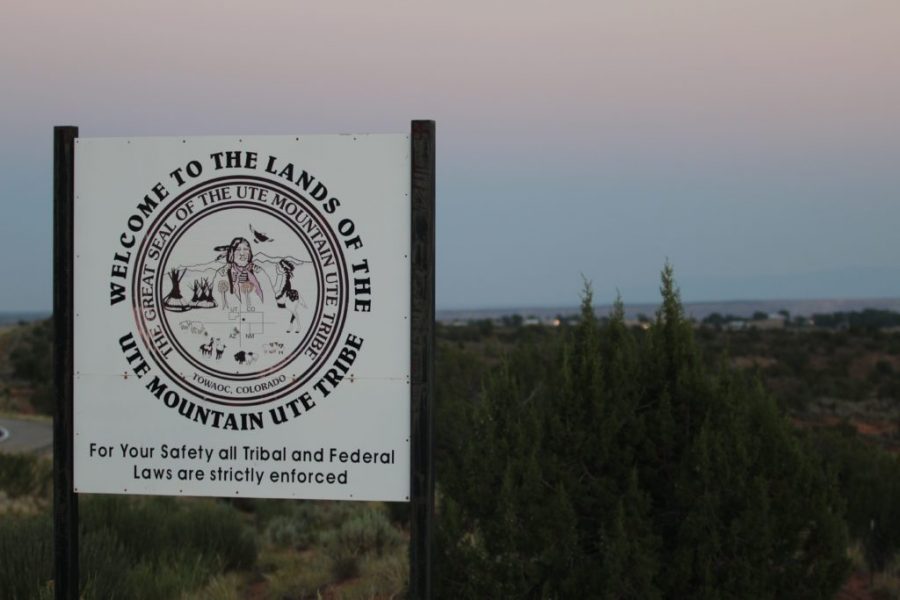
Jolene Cantsee • Jul 28, 2017 at 10:37 am
My mom is a longtime resident from White Mesa. She has had good health throughout her life and all of a sudden cancer was found. I believe that this may have been from the contaminated water from the mill. She isn’t Rich so we don’t know who to go to to get legal help, this is no laughing matter and is harmful to everyone’s health, I do believe the milll is the reason for my mom’s cancer. Who do we go to for help when it comes to life and death situations? I’m pretty sure the milll will deny it all. But this is cancer is hurting mind, body, and soul of my previous mom she is still making her way thru cancer and struggles to fight EVERYDAY.